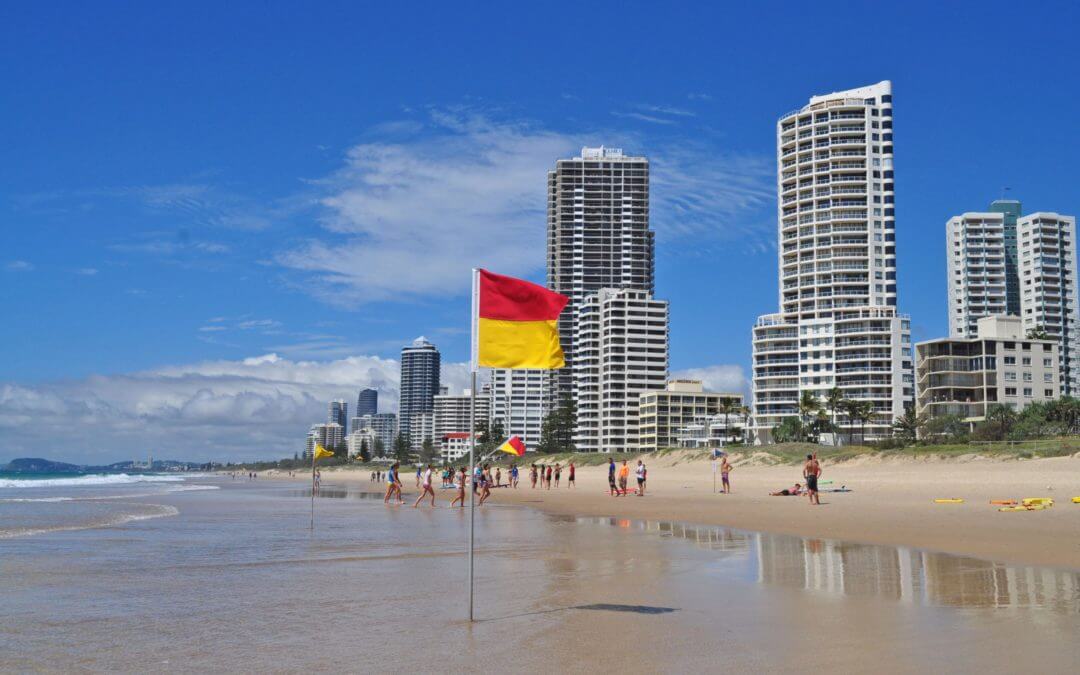Surfing: A national pastime and with our incredible coastline and excellent weather, it’s no surprise that surfing is a popular Australian hobby at any time of year.
Some surveys show that as many as 1 in 10 Australians surf for fun, and our country is dotted with over 100 surf schools.
In sum, thousands of surfers at various skill levels are catching waves every day – so there is a serious need for monitoring our oceans and beaches to keep surfers safe.
Drones are a cost-effective and powerful tool for keeping our surfers and swimmers safe. Keep reading to discover the unique ways that Australia deploys drones for surf lifesaving.
Aiding in searches
Surf lifesaving crews are constantly on the watch for surfers who are caught in riptides or incapacitated in other ways. Between powerful currents, massive waves and natural threats, the ocean is a frightening place to get caught. Searchers can quickly deploy drones to fly over swaths of ocean, survey conditions and send a report back to rescuers on land. From there, rescue teams can make informed decisions about how to proceed with helping a stranded surfer.
Real-life application: Surf Life Saving Australia (SLSA) and WestPac collaborated to deploy more than 50 drones around the country during beach season. The drones provide an aerial view of popular beaches and monitor for riptides and distressed swimmers.
Shark surveillance
Even the most fearless surfer worries about sharks, and with good reason – Australia has seen an average of 16.3 shark attacks per year since 1988.
Surfers have died in about one-quarter of these attacks. Drones protect surfers from sharks through sophisticated artificial intelligence (AI) software that can tell the difference between sharks and other marine objects like boats or large fish. The software is constantly scanning for sharks near popular beach areas and can quickly issue alerts if needed.
Best of all, the software has proven to be 90 percent accurate in its shark spotting capabilities. When humans were assessed for the same task we could only identify sharks with 18 per cent accuracy from above.
Real-life application: The SharkSpotter project is a collaborative effort between the University of Technology Sydney and The Ripper Group. For this project drones collect real-time aerial imagery and powerful software sorts each object into 16 categories. If a shark is detected SharkSpotter notifies the drone operator with a visual and audible alert.
Beach monitoring
Australia has over 25,000km of coastline and plenty of public beaches. During the beach season thousands of people gather to enjoy the sun and sand.
Human and natural factors can have a lasting impact on the coastal environment. Once again, drones can save the day by watching for changing coastal conditions. With high-powered imaging and software, drones can assess cliff stability, monitor coastal vegetation and provide valuable data about changes over time.
Real-life application: The Wattle Range Council in South Australia commissioned drones to gather highly-detailed photos of the coastline and coastal infrastructure. The council obtained these images for a little over $1000, and given the affordable price tag, they’ll gather similar images every year to track coastal changes.
Conclusion
Time is of the essence in every search and rescue operation, and drones excel at mobilising quickly and performing tasks with precision. If you’d like to discover ways that drones can help your organisation contact Mirragin today for a consultation at admin@mirragin.com.au.
Find out more about drones and their future in business, subscribe to our podcast.

